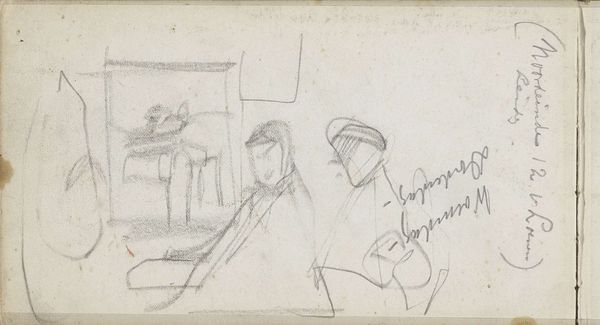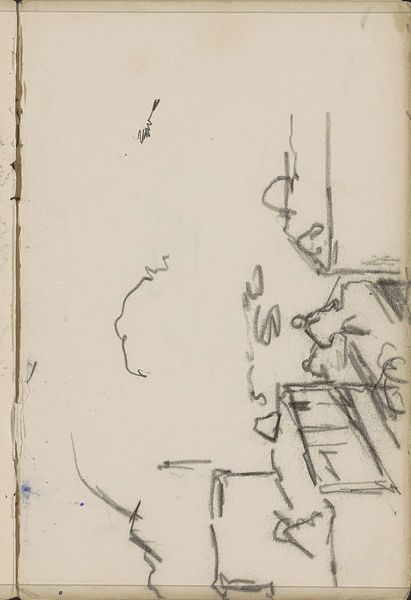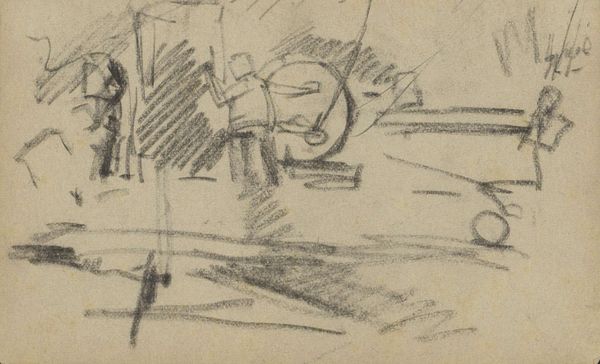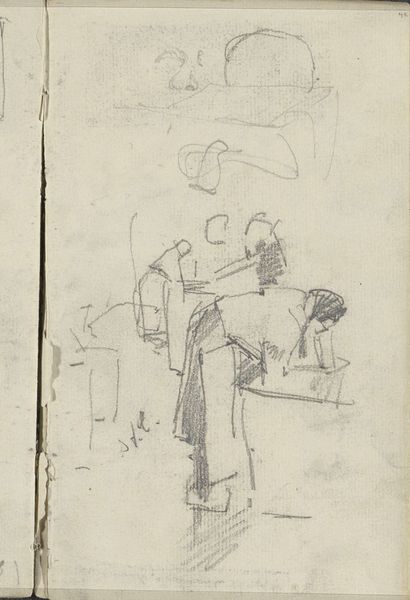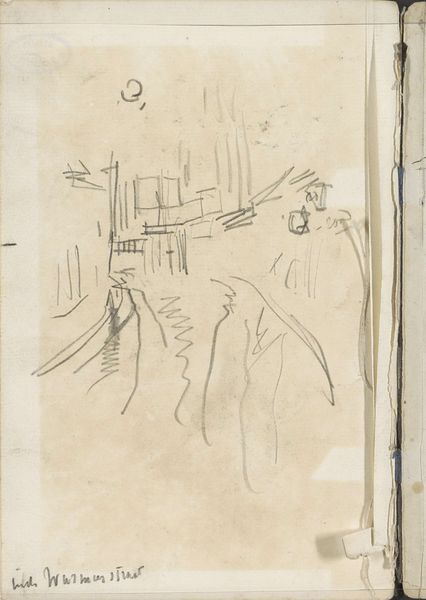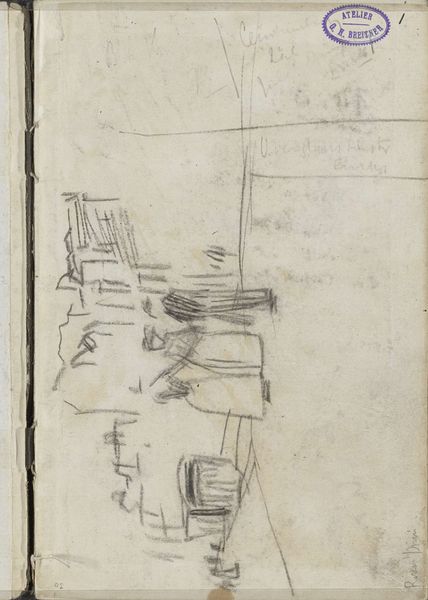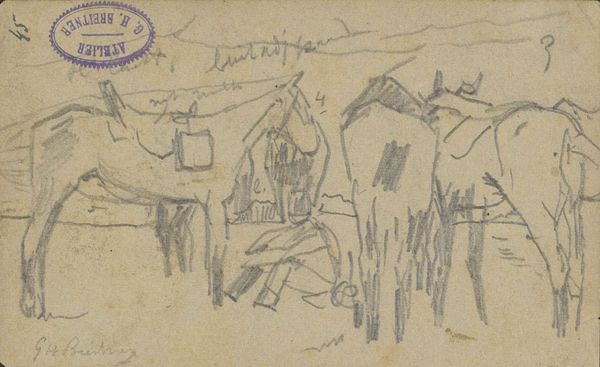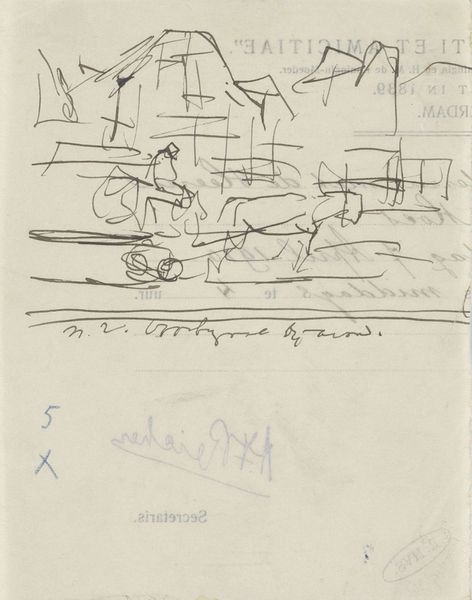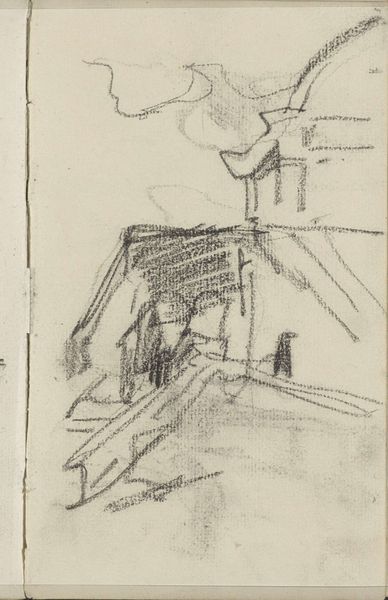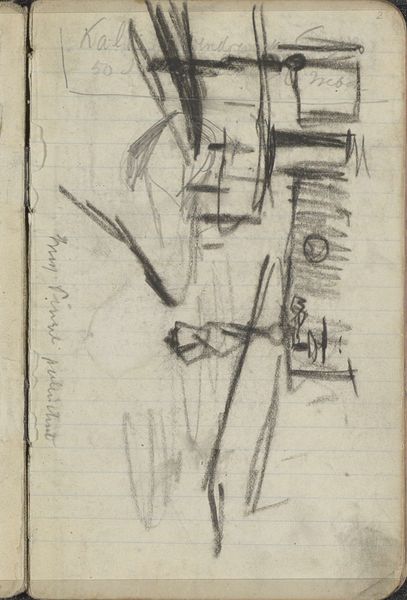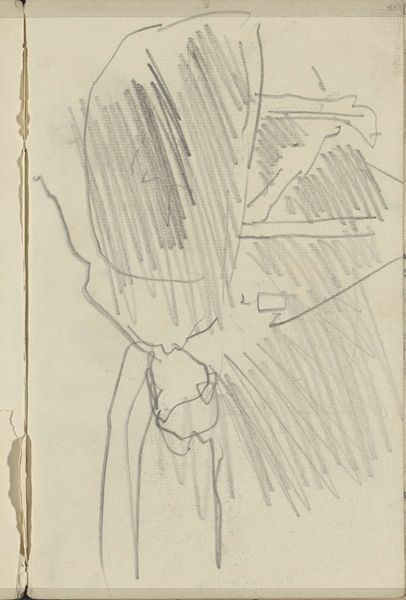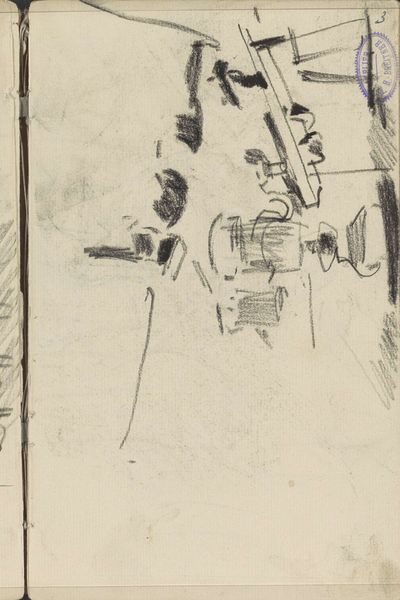
Figuren en paardentrams op de Dam in Amsterdam c. 1896 - 1903
0:00
0:00
Dimensions: height 154 mm, width 234 mm
Copyright: Rijks Museum: Open Domain
Editor: This pencil drawing, "Figures and Horse-drawn Trams on the Dam in Amsterdam" by George Hendrik Breitner, dated around 1896-1903, gives such an ephemeral impression of a bustling city. It feels almost like a memory fading. What do you see in this piece? Curator: I see a powerful capture of fleeting moments. Breitner’s sketch isn’t just a cityscape, it's an exploration of urban experience itself. Notice how the trams and figures are rendered with such abbreviated lines. What emotional impact does this have on you? Editor: It definitely gives a sense of transience, the feeling that things are constantly moving and changing. It’s less about detail and more about the overall impression. Curator: Exactly! Consider the historical context. Amsterdam at the turn of the century was a city rapidly transforming, embracing modernity. The horse-drawn trams, themselves a symbol of progress, are almost ghostlike. They speak to the temporality of progress, don't they? Editor: That's a really interesting point. It's like Breitner is showing us not just what is there, but also hinting at what is about to disappear. Curator: Indeed! Breitner’s quick strokes immortalize the feeling of the modern city, its impermanence becoming its most defining feature. A potent reflection on time itself, and the visual symbols that can trigger our cultural memories. Editor: This has given me a completely different lens through which to view this artwork. The way you described it gave me an insightful appreciation. Curator: I agree. These layered symbolic connections make Breitner's sketch enduringly relevant. A brief but significant pause for contemplation!
Comments
No comments
Be the first to comment and join the conversation on the ultimate creative platform.

